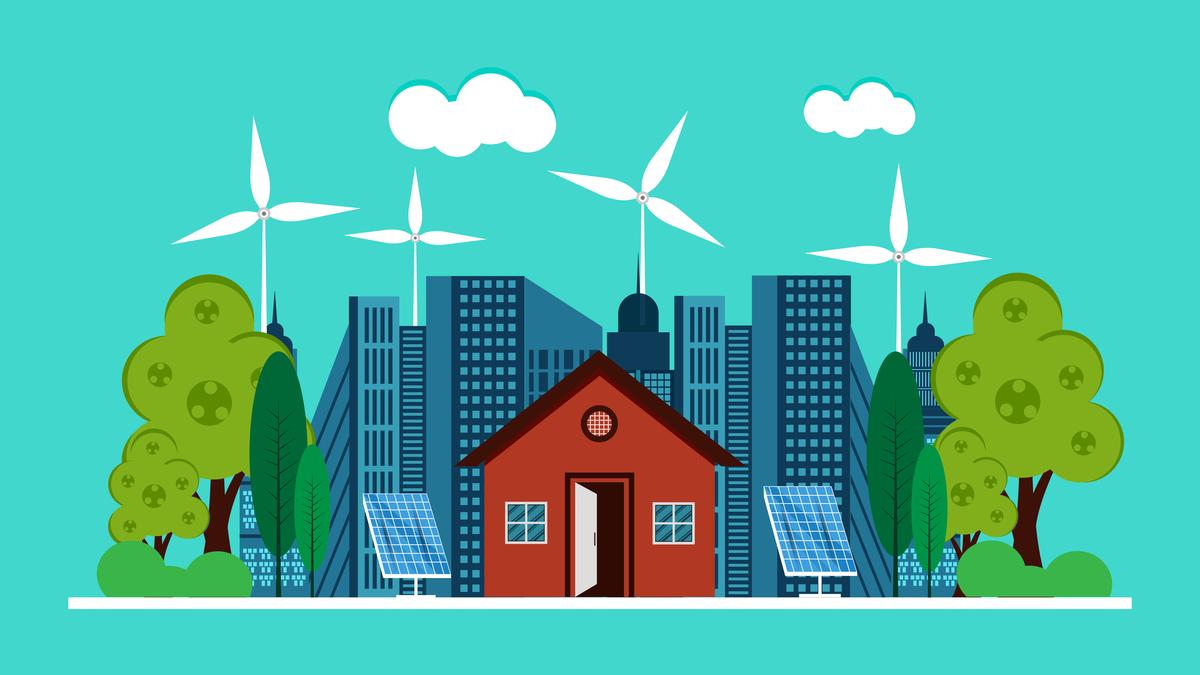
I n response to the pressures of climate mitigation as well as adaptation, High-Performance Buildings (HPBs) are emerging as essential solutions in the construction sector. They address both urban and climate challenges since the built environment contributes to these issues and presents opportunities for change. HPBs are designed to reduce greenhouse-gas emissions, minimise energy and water use, and cut operational costs using climate-adaptive designs.
They also improve their occupants’ well-being, making them attractive to both businesses and occupants. Beyond environmental benefits, HPBs offer financial advantages like enhanced property value, lower utility bills, and access to carbon financing. Governments worldwide are trying to adopt HPBs through progressive policies and financing mechanisms that promote energy efficiency, resource management, and carbon neutrality.
India is also beginning to align its policy frameworks and business strategies to support these structures. Policies supporting energy efficiency Energy efficiency is central to HPB design and drives sustainable construction practices. Many governments are actively promoting energy-efficient buildings as part of their climate strategies.
The European Union’s ‘Green Deal’, which targets climate neutrality by 2050, mandates energy-efficient building designs and retrofits. Germany’s KfW Bank offers low-interest loans for energy-efficient projects while Denmark’s strict BR18 building codes provide incentives for sustainable construction practices. In the U.
S., programmes like Energy Star and the LEED certification encourage energy efficiency and offer tax credits for green-building initiatives. The construction industry contributes about 39% of energy-related carbon dioxide emissions worldwide, and these policies suggest reducing energy consumption isn’t just technically feasible: it could be financially viable, too, with the right incentives.
How is India supporting HPBs? India has made significant progress in promoting energy-efficient buildings through initiatives under its National Action Plan on Climate Change. The Energy Conservation Building Code (ECBC), developed by the Bureau of Energy Efficiency (BEE), aims to reduce buildings’ energy demands by up to 30%. The Green Rating for Integrated Habitat Assessment (GRIHA) lists more than 3,000 registered projects focusing on sustainable practices and lowering carbon emissions.
The Indian Green Building Council (IGBC) promotes energy-efficient designs, with more than 14,000 certified projects covering 12.5 billion sq. ft.
Hyderabad, Noida, and Pune also offer higher floor area ratios and other incentives for buildings that meet ECBC standards, leading to a noticeable increase in green registrations and thus significant energy savings. The BEE is targeting 30% of new buildings to achieve net-zero status by 2030, in line with the national commitment. How do HPBs make financial sense? As green technologies become more affordable, the initial cost difference between conventional buildings and high-performance buildings is narrowing.
HPBs deliver substantial energy savings and reduce emissions at little or no incremental costs compared to conventional buildings. For example, Infosys successfully integrated energy-efficient designs into its campuses, using natural lighting, energy-efficient air conditioning, and smart performance verification. This reduced its energy consumption by up to 45%, resulting in significant cost savings.
HPBs also improve indoor air quality and thermal comfort, contributing to employee well-being. HPBs also command higher property values due to lower operating costs, smaller environmental footprint, and growing demand from environmentally conscious buyers and tenants. These properties benefit from enhanced asset valuation, driven by higher net operating incomes, lower vacancy rates, and longer lease durations.
The financial benefits of energy efficiency translate to better capitalisation rates, which investors use to assess the value of a property relative to its income potential. In India, commercial properties with green certifications like IGBC, GRIHA or LEED attract premium rents and have higher occupancy. Examples include ITC’s Green Centre in Gurugram, the TCS Siruseri IT Park in Chennai, the Nirlon knowledge Park in Mumbai, and Embassy’s commercial developments in Bengaluru.
How are HPBs financed? Carbon financing supports HPBs by converting their carbon savings into financial value, easing the way for developers to secure funding. Carbon credits — tradable permits allowing companies to offset their carbon emissions — play a key role in this process. Projects earn these credits by reducing emissions and/or removing carbon from the atmosphere.
In regions with carbon pricing, like the European Union and China, HPBs that improve energy efficiency and lower emissions can generate carbon credits. These carbon credits provide a significant financial incentive for developers to invest in sustainable building practices. However, to maximise the potential of these systems, it’s important to strengthen the accounting practices and ensure better transparency in the monitoring, reporting, and verification of the credits.
Green bonds and climate-focused funds also offer ways to finance HPBs. In 2020 alone, green bonds worth $269.5 billion were issued worldwide.
Investors are increasingly interested in projects that align with sustainability goals. Global organisations like the World Bank and the Green Climate Fund also provide financial support for HPBs. These financing mechanisms help offset the higher upfront costs of building HPBs, making them more affordable and promoting their wider use.
By participating in carbon markets, trading energy and carbon savings, and securing green or climate funding, developers can make HPBs more financially viable while also contributing to global efforts to reduce carbon emissions. Sandhya Patil is a sustainability expert with the Indian Institute for Human Settlements (IIHS) and anchors technical assistance for ASSURE. The author does not have any financial interests vested with any company or organisation that would benefit from this article.
Published - October 22, 2024 08:30 am IST Copy link Email Facebook Twitter Telegram LinkedIn WhatsApp Reddit Text and Context / Green buildings / climate change / green technologies.














